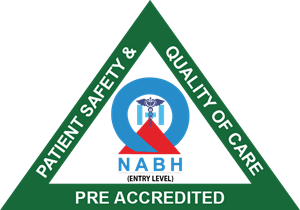Refractive errors are the most common type of vision problem affecting people of all ages. If you struggle with blurry vision, frequent headaches, eye strain, or difficulty focusing, you might have a refractive error. These conditions occur when the shape of the eye prevents light from focusing directly on the retina, leading to vision distortion.
Thankfully, refractive errors are easily treatable with glasses, contact lenses, or advanced laser eye surgery. Read on to learn about the causes, symptoms, types, and best treatments for refractive errors—and visit Infinite Vision Care and Laser Centre today.
What Are Refractive Errors?
A refractive error occurs when the eye cannot properly bend (refract) light to focus it on the retina, resulting in blurred or distorted vision. This happens due to:
✔ Abnormal eye shape – The eye may be too long or too short.
✔ Irregular cornea curvature – The cornea may be too steep or too flat.
✔ Aging lens changes – The lens loses flexibility over time.
Refractive errors affect people of all ages and can worsen over time if left untreated.
Types of Refractive Errors
1. Myopia (Nearsightedness)
✔ Symptoms: Clear vision up close but blurred distance vision.
✔ Causes: The eye is too long, or the cornea is too curved, causing light to focus in front of the retina instead of directly on it.
✔ Treatment: Prescription glasses, contact lenses, LASIK, SMILE, ICL surgery.
2. Hyperopia (Farsightedness)
✔ Symptoms: Clear distance vision but blurred near vision.
✔ Causes: The eye is too short, or the cornea is too flat, causing light to focus behind the retina.
✔ Treatment: Convex lens glasses, contact lenses, or laser correction (PRK, LASIK, ICL implant).
3. Astigmatism
✔ Symptoms: Blurred or distorted vision at all distances, headaches, and eye strain.
✔ Causes: The cornea or lens has an irregular shape, causing light to focus unevenly on the retina.
✔ Treatment: Toric lenses, LASIK, PRK, or ICL surgery.
4. Presbyopia (Age-Related Farsightedness)
✔ Symptoms: Difficulty reading small text, needing to hold objects farther away to see clearly.
✔ Causes: The natural lens loses elasticity with age, making it harder to focus on close objects.
✔ Treatment: Progressive glasses, bifocals, contact lenses, presbyLASIK, or multifocal IOLs.
Symptoms of Refractive Errors
If you experience any of the following symptoms, you should schedule an eye exam with an ophthalmologist or optometrist:
✔ Blurry vision (near or far distance)
✔ Headaches and eye strain
✔ Squinting to see clearly
✔ Double vision
✔ Difficulty seeing at night (night blindness)
✔ Frequent changes in glasses prescription
Refractive errors can also affect children, causing learning difficulties and poor academic performance if left undiagnosed. Early pediatric eye checkups are crucial.
Diagnosis: How Are Refractive Errors Detected?
A comprehensive eye examination is essential for diagnosing refractive errors. The most common tests include:
✔ Visual Acuity Test: Measures clarity of vision using a Snellen chart.
✔ Refraction Test: Determines the exact lens power needed for correction.
✔ Corneal Topography: Maps the shape of the cornea to detect astigmatism.
✔ Retinoscopy: Evaluates how light reflects off the retina to determine refractive errors.
These tests help eye specialists recommend the best treatment for clear and comfortable vision.
Treatment Options for Refractive Errors
1. Eyeglasses (Prescription Glasses)
✔ Most affordable and non-invasive correction method.
✔ Available in single vision, bifocal, trifocal, and progressive lenses.
✔ Suitable for all ages, from children to seniors.
2. Contact Lenses
✔ Provide a wider field of vision than glasses.
✔ Options include soft lenses, rigid gas permeable (RGP) lenses, toric lenses for astigmatism, and multifocal lenses.
✔ Requires proper hygiene to prevent infections.
3. Laser Eye Surgery (Permanent Vision Correction)
For those seeking permanent correction, refractive surgery is an excellent option:
✔ LASIK (Laser-Assisted in Situ Keratomileusis) – Uses a laser to reshape the cornea for improved vision.
✔ SMILE (Small Incision Lenticule Extraction) – Minimally invasive laser surgery for myopia and astigmatism.
✔ PRK (Photorefractive Keratectomy) – Ideal for those with thin corneas, an alternative to LASIK.
✔ PresbyLASIK – Corrects presbyopia for clear near and distance vision.
4. Implantable Collamer Lenses (ICL Surgery)
✔ Best for high myopia or thin corneas where LASIK is unsuitable.
✔ A biocompatible lens is implanted inside the eye to correct vision without removing corneal tissue.
5. Refractive Lens Exchange (RLE) / Clear Lens Extraction
✔ Best for severe presbyopia or extreme hyperopia.
✔ Replaces the natural lens with an artificial intraocular lens (IOL) to correct vision permanently.
Cost of Refractive Error Correction at Infinite Vision Care and Laser Centre
The cost of vision correction depends on the type of treatment chosen and vary from case to case. Our clinics offer EMI options for laser surgery, making vision correction affordable.
Where to Get the Best Treatment for Refractive Errors?
Looking for the best eye specialist near you? Visit Infinite Vision Care and Laser Centre for best treatment today!
Schedule Your Eye Checkup Today!
Don’t let blurry vision affect your daily life. Whether you need glasses, contact lenses, or laser eye surgery, getting a routine eye checkup can help restore perfect vision.
📅 Book an appointment at Infinite Vision Care today for advanced refractive error correction.
🚀 Say goodbye to blurry vision—see the world clearly with expert eye care!


